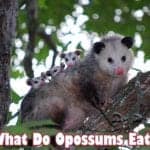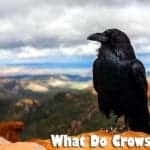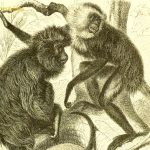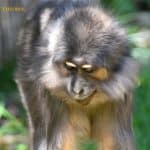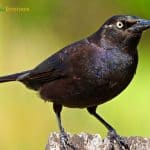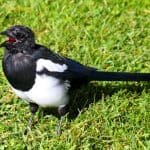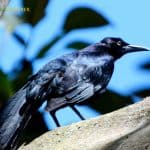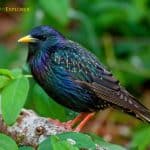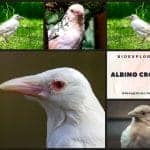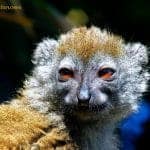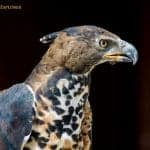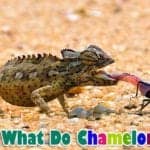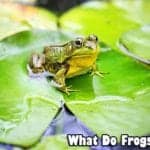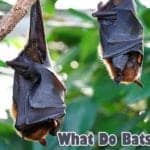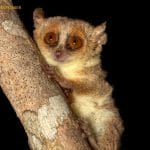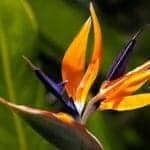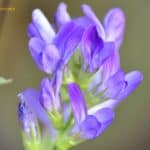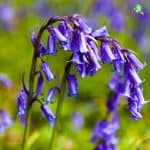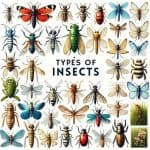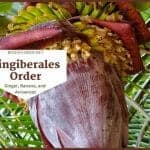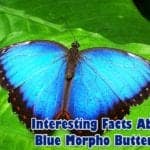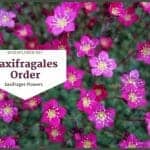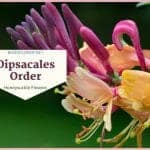Species of birds - search results
If you're not happy with the results, please do another search
What Do Opossums Eat?
Opossums are marsupials, endemic to the Americas. Explore what do opossums eat, opossums diet by types, what eats opossums, hunting patterns, and more.
Order Falconiformes / Falcons
Birds in Order Falconiformes are highly efficient deadly predators. A perfect prominent example of this order is Falcons. Explore the characteristics & species here.
What Do Owls Eat?
Owls are described as raptors because of their sharp claws and beaks. Explore what do owls eat, owls diet by different types, what eats owls, how often do owls eat & more.
What Do Crows Eat?
Explore what do crows eat by their types and what eats crows. Crows diet may include small mammals, fishes, amphibians, reptiles, insects, seeds, nuts, & more.
What Do Foxes Eat?
Foxes are classified under the genus Vulpes made up of about 12 existing species. Explore what do foxes eat, diet by species & what eats foxes here.
Top 26 BEST Animals With Best Eyesight
The eyes with various marvelous features have evolved in all kinds of animals. Explore top 26 different animals with best eyesight in animal kingdom.
Black colobus
The black colobus, also known as satanic black colobus, is a species of Old-World monkey in the Colobus genus. The black colobus is the oldest of the 5 recognized species in the genus Colobus and is said to have diverged 3 to 4 million years ago.
Gray-Cheeked Mangabey
The gray-cheeked mangabey (Lophocebus albigena), also called the white-cheeked mangabey, is an Old World monkey found in the forests of central Africa. Gray-cheeked mangabeys belong to the same family (Cercopithecinae) and phylum (Papionini) as mandrills, macaques, and baboons.
What Do Groundhogs Eat?
Groundhogs are herbivores that eat a diverse diet of greens, vegetables, fruits and more. Learn everything groundhogs eat and their favorite foods.
Olive Colobus
The olive colobus (Procolobus verus), also called the Van Beneden's colobus or green colobus is a primate species in the Cercopithecidae family. It is the smallest specimen of all the Colobine monkeys. It is rarely seen in its natural habitat due to its secretive nature and cryptic coloration.
Preuss’s Monkey
The Preuss's monkey (Allochrocebus preussi) also called the Preuss's guenon is a diurnal primate that inhabits terrestrial montane forests (up to 2,500 meters) in eastern Nigeria, western Cameroon, and Bioko in Equatorial Guinea.
Red-mantled Saddle-Back Tamarin
The Red-mantled saddleback tamarin (Leontocebus lagonotus) is a species of saddleback tamarin, a species of small South American monkey. The Red-mantled saddle-back tamarin lives in Peru and Ecuador, and its type locality is in Peru, near the confluence of the Amazon and Napo.
Common Grackle
The Common Grackle is a large, long-tailed blackbird with striking iridescent plumage-males shimmer with purple, green, or blue gloss, while females are duller and browner. Found across eastern North America, grackles thrive in a wide range of habitats, from wetlands and fields to suburbs and city parks. Highly social, they often gather in massive flocks outside the breeding season. Their varied diet includes insects, seeds, grains, and even small animals. Grackles are known for their harsh, rusty-gate calls, and their communal roosts can number in the millions.
Black-billed Magpie
The Black-billed Magpie is a striking, medium-sized bird with a long iridescent tail, black head and back, and bold white patches on its wings and belly. Found in western North America, it thrives in open habitats like meadows, grasslands, and near human settlements. Magpies are highly social and intelligent, often seen in noisy flocks and known for their complex social displays. They build large, domed nests and mate for life. Notably, magpies sometimes gather around deceased companions in a behavior likened to a “funeral.” Black-billed Magpies can recognize themselves in mirrors, a rare trait among birds.
Pied Crow
The Pied Crow is a striking black-and-white corvid native to sub-Saharan Africa and nearby islands. Easily recognized by its glossy black head, wings, and tail contrasted with a broad white chest and belly, it is slightly larger than the Carrion Crow and has a robust, slightly hooked bill. Highly adaptable, Pied Crows thrive in open savannas, grasslands, farmlands, and urban areas, often seen in pairs or small groups but sometimes gathering in large flocks. Exceptionally intelligent, they use tools, cache food, and mimic sounds. Their omnivorous diet includes insects, small animals, fruit, carrion, and human scraps.
Great-tailed Grackle
The Great-tailed Grackle is a large, striking blackbird known for its glossy, iridescent males with long, keel-shaped tails and bright yellow eyes. Females are noticeably smaller and brown with darker wings and tails. Native to the Americas, these highly social birds thrive in open areas near water, including farmland, city parks, and suburban lawns, and have rapidly expanded their range across North America in recent decades.
Great-tailed Grackles are famous for their raucous flocks and wide variety of vocalizations, from whistles to harsh rattles. They are highly flexible and persistent problem-solvers, able to adapt quickly to new environments and even solve complex puzzles.
European Starling
The European Starling is a medium-sized, black songbird with short, triangular wings, a short tail, and striking iridescent plumage speckled with white, especially in winter. During breeding season, adults display a yellow bill and a purple-green sheen. Native to Europe, Asia, and North Africa, starlings were introduced to North America in the 1890s and now number over 200 million. Highly social, they form enormous flocks and perform mesmerizing aerial displays called murmurations. Starlings are accomplished mimics, able to imitate other birds and even human sounds. They are aggressive cavity nesters, often outcompeting native species for nesting sites.
Eastern White Pine
Explore the world of the Eastern White Pine, a majestic tree with a rich history and diverse uses. Learn about its characteristics, its role in the ecosystem, and how to care for it. Discover why the Eastern White Pine is more than just a tree; it's a symbol of resilience and a testament to nature's bounty.
Hawaiian Crow
The Hawaiian Crow, or ʻAlalā, is a critically endangered bird endemic to Hawaii, now extinct in the wild but surviving in captive breeding programs. About 19–20 inches (48–50 cm) long, it sports soft, brownish-black plumage, a thick bill, and bristly throat feathers. ʻAlalā once inhabited dry and mesic forests on the slopes of Mauna Loa and Hualālai, playing a vital role in seed dispersal and pest control. Highly intelligent, Hawaiian Crows use sticks as tools-a rare trait among birds-and have a complex repertoire of over 20 vocalizations. In Hawaiian culture, the ʻAlalā is revered as an ‘aumakua, or family guardian spirit.
Albino Crows
Rare genetic variants, albino crows reveal key insights into pigmentation, survival, and biodiversity despite the challenges posed by their bright white plumage that lacks the species' typical protective camouflage.
Red Monkeys
Red monkeys include over 50 species of primates from Asia, Africa and the Americas that exhibit signature red coloration on their fur, skin or body parts adapted for forest camouflage and heat regulation while also communicating social moods.
Spider Monkeys
Spider monkeys comprise 7 New World primate species adept at brachiating through Central and South American rainforest canopies, endangered due to habitat destruction. Their spindly prehensile tails, flexible shoulder joints, hook-like fingers and fusion-fission social groups represent unique adaptations for foraging canopy fruits.
Eastern Lesser Bamboo Lemur
The eastern lesser bamboo lemur (Hapalemur griseus) is a small, endangered rainforest primate found only in Madagascar. This unique species has adapted to specialize in a toxic bamboo diet other animals cannot consume. Yet habitat loss and hunting have left remaining populations highly vulnerable.
What Is Biological Magnification?
Understand biological magnification - how toxins accumulate exponentially up food chains to dangerous levels in top predators. Unpack biomagnification impacts, sources, and solutions.
Top Spectacular Rainforests of The World
Rainforests are considered the planet’s oldest ecosystems. Here are the top most spectacular rainforests in the world (from different continents) & facts.
Crowned Eagle
The Crowned Eagle, also known as the African Crowned Eagle, is a powerful raptor native to sub-Saharan Africa, favoring dense forests and woodlands. Recognizable by its striking dark crest and intense yellow eyes, this eagle boasts a wingspan of 5–6 feet and is considered Africa’s most powerful eagle pound for pound. Its massive talons and strong legs allow it to hunt large prey, primarily monkeys, small antelope, and hyraxes, though it occasionally takes birds and reptiles. Crowned Eagles build enormous nests high in emergent trees, sometimes reusing them for over a decade. Their courtship includes dramatic aerial displays and prey offerings.
What Do Eagles Eat?
Eagles are powerful birds with sharp beaks. Explore what do eagles eat, detailed eagles diet by types, how do eagles hunt, how often eagles eat & more here.
What Do Chameleons Eat?
Chameleons are unique animals considered to have originated from old-world lizards. Learn what chameleons eat by their types, how often & what eats them.
What Do Toads Eat?
Toads are notable for their dry, bumpy skin with glands located behind their eyes. Explore what do toads eat, toads diet by types, what eats toads & more.
What Do Frogs Eat?
Learn what do frogs eat in detail by types, how do frogs hunt, what eats frogs, and more. These amphibians diet consists of insects, earthworms & spiders.
What Do Lizards Eat?
All lizards belong to the reptiles family in the animal kingdom. Explore what do lizards eat, lizard diet by types, what eats lizards and all related topics.
What Do Squirrels Eat?
Squirrels are in the same family as marmots, prairie dogs, and chipmunks. Explore what do squirrels eat, squirrel's diet by types, what eats squirrels & more.
What Do Bats Eat?
After rodents, bats are the 2nd most popular mammal species. Explore what do bats eat, when do bats eat, bats diet by types, what eats bats & how bats hunt.
What Do Kangaroos Eat?
Kangaroos are marsupials that can only be found in Australia. Kangaroos are mostly herbivores. Explore what do kangaroos eat in detail by their types & more.
What Do Sloths Eat?
Sloths are arboreal creatures commonly found in South & Central America. Explore what do sloths eat, diet by types, how often, how much, & what eats sloths.
Scimitar Oryx
Learn about the endangered scimitar-horned oryx, a striking Saharan antelope brought to extinction in the wild by 2000. Discover how urgent conservation efforts and captive breeding programs for this iconic desert-adapted Oryx dammah species have kept its future hopes alive against the odds.
Berthe’s Mouse Lemur
Weighing just over an ounce, Berthe's mouse lemur is the world's smallest primate. Endemic to dwindling western Madagascar forests, this nocturnal insectivore faces grave threats from deforestation and predation despite recent habitat protections. Learn surprising facts about its characteristics, behavior, endangered status, and the conservation efforts crucial to saving this tiny species.
Top 18 BEST Tundra Animal Adaptations
The coldest areas on Earth, such as regions close to the North Pole and the South Pole, have unique features. Here are the top 18 tundra animal adaptations.
What Do Peacocks Eat?
Peacocks are flashy birds renowned for their colorful tail plumage. Explore what do peacocks eat, their diet by types, and what eats peacocks & more here.
Black Leopard
Uncover 25+ fun facts about black leopards! Discover why these elusive melanistic felines are so special, learn about their unique adaptations, and explore the myths and realities surrounding these beautiful creatures.
Bird of Paradise
The Bird of Paradise is also known as a crane flower because it looks like a graceful bird with a long neck. There are about 5 different species of this plant. Its brightly colored flowers and long stem look like a bird with a tuft of brightly colored flowers and a pointed beak on its head.
The Top 25 Bicolor Flowers: Nature’s Two-Toned Wonders
Discover 25 stunning bicolor flowers, from rare orchids to common garden favorites. Learn about their habitats, care tips, and unique features in this guide.
Top 18 Amazon Rainforest Plants
The Amazon Rainforest is considered the home of the most diverse species in the world. Learn the top 18 Amazon rainforest plants & their details here.
Top 26 Best Hawaiian Flowers
Explore the top 26 unique Hawaiian flowers exclusive to Hawaii's archipelago. Dive into the world of these beautiful species, their interesting facts, and their significance in Hawaii's ecosystem.
25 Must-See Colorful Orchids
Discover 25 stunning colorful orchids, from vibrant blues to fiery reds. Explore their unique features, habitats, and the vital role of color in orchid ecology.
Alfalfa
Learn about alfalfa (Medicago sativa), its flower characteristics, cultivation practices, environmental benefits, and economic importance in this comprehensive guide.
Bluebell Flower
Explore the enchanting Bluebell flower (Hyacinthoides non-scripta), its vibrant violet-blue blooms, ecological significance, different types of bluebells and fun facts in this comprehensive guide.
Insect Orders
Explore 28 major insect orders under the class Insecta (diverse group of arthropods).Insects play vital roles in ecosystems, from pollination and decomposition to serving as food for other animals.
World’s Top 15 Poisonous Caterpillars
There are many kinds of poisonous caterpillars; several caterpillars develop chemical warfare - they become poisonous. Here are 15 species of poisonous caterpillars from around the world.
Order Zingiberales / Ginger, Orchidantha & Banana Plants
Zingiberales' order comprises several species of great economic importance, like the banana and the ginger. Members have almost restricted distribution to tropical regions. Zingiberales species have ptyxis, large flowers, attractive colors, and inferior ovaries. Banana, Bird-of-paradise, Orchidantha, ginger, costus, and Canna lily are examples of Zingiberales order.
Top 21 Facts About Blue Morpho Butterfly
The Blue Morpho butterfly is the most well-known species in the butterfly genus Morpho. Learn the top 21 facts about the Blue Morpho butterfly here.
America’s 15 Must-Visit Botanical Gardens: Discover Them Today!
From exquisite blooms to exotic plants, our guide to America's top 15 botanical gardens promises enchanting adventures. Don't miss out on these beautiful, botanical must-sees!
Top 15 Ecology News of 2022
In 2022 paves the way towards discoveries in ecological consequences influenced by genetic factors, climate change in marine habitat, coral reefs and plants having great adaptability to climate change, and the necessity towards conservation of biodiversity.
June Birth Flowers
Unlock the hidden secrets of your June birth flowers! Discover the symbolism behind roses and Honeysuckle, and delve into their rich history and fun facts here.
43 Blue Flowers Unveiled: Why These Beauties Have Captured Everyone’s Attention?
Discover the hidden secrets of 43 types of blue flowers in our captivating blog post. Explore the rarity of natural blue pigments in flowers and symbolism and meanings of blue flowers.
Order Saxifragales / Saxifrages Flowers
Saxifragales is a morphologically diverse dicotyledonous order of flowering plants worldwide. Saxifragales plants have hypanthium, glandular leaf teeth, serrate lamina margins, free petals, and small seeds. Most Saxifragales flowers are radially symmetrical and bisexual. The example species of Saxifragales are the Irish rose, campfire plant, and gum vine.
Cosmos
Cosmos are annual flowering plants native to Mexico, characterized by brightly colored, daisy-like blooms borne on long, slender stems. Cosmos is a species of flowering plant in the Asteraceae (sunflower) family native to the meadowland and scrubland of Mexico, where most species are found.
Order Dipsacales / Honeysuckle Flowers
Dipsacales is a eudicotyledonous order of flowering species. Members of Dipsacales show characteristics like pubescent stems, flowers mostly in cymes, and 4-5 floral parts. The Dipsacales flowers are primarily bisexual and are pollinated by insects and/or birds. Honeysuckle, Seven-son flower, Alpine valerian, Mountain snowberry and Japanese snowball flowers are examples of Dipsacales.
Order Malpighiales / Violets Flowers
Malpighiales order is a large group with species primarily distributed in tropical regions. The members of Malpighiales often have toothed and stipulate leaves, 10 free stamens, 3-5 fused carpels, a nectary, superior ovaries, and typically endospermous seeds. Most Malpighiales flowers consist of 5 sepals and 5 petals. The violets, flax, passion flowers, euphorbias, and mangroves are some of the notable species of Malpighiales.
Order Caryophyllales / Pink and Carnation Flowers
Caryophyllales is a large and diverse order of dicotyledonous flowering plants. Members under Caryophyllales are distributed on all the continents and are notable for their morphological uniqueness and ecophysiological adaptations. The flower species of carnation, four o’clock, and cactus belong to Caryophyllales and offer great beneficial use.


